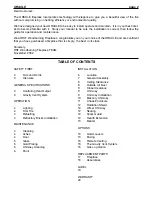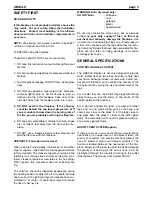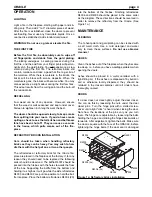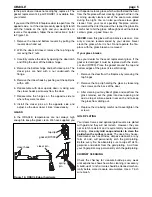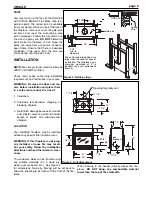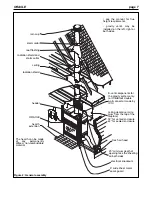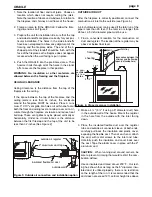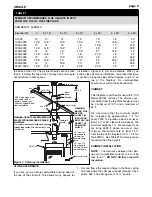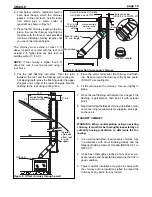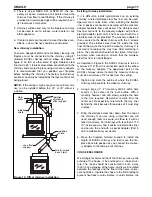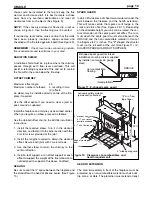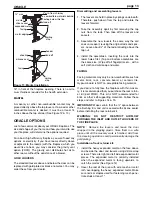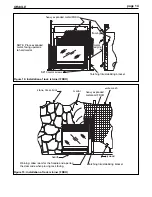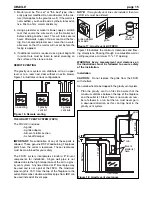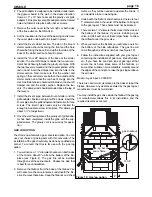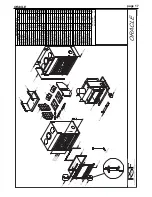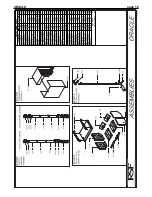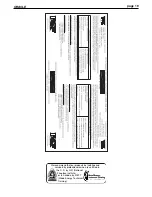
ORACLE
4. There is, as per NBCC 9.21 or NFPA 211, the nec-
essary air space clearance at all points around the
chimney from floor to roof flashing. If the chimney is
enclosed in drywall, openings will be required to ver-
ify clearances at all points.
5. Chimney will be used only for the fireplace and may
not be used to vent a furnace, water heater or any
other appliance.
6. If major repairs are required to meet the above con-
ditions, a new chimney should be constructed.
New chimney installation:
To ensure adequate draft and to facilitate cleaning, the
fireplace must be connected to the chimney using 8"
diameter EXCEL chimney with an elbow. As shown in
figure 8, an ICC or other listed 8" rigid stainless steel
liner and a 45° stainless steel elbow are attached to the
chimney and secured in place using a masonry adaptor.
It is recommended that you position your fireplace
before building the chimney. The factory built chimney
sections can easily be installed as the layers of brick are
being placed.
NOTE :
If the ceiling is high enough some vertical chim-
ney can be installed before the 45° or 30° elbow is
installed.
Existing chimney installation:
If it is difficult to install rigid stainless on an existing
chimney, a listed stainless steel flex liner can be used.
Special care is to be taken when installing the flexible
liner. A positive connection is assured with the masonry
adaptor available from your dealer. The stainless steel
flex liner connects to the masonry adaptor with a flexi-
ble/rigid adaptor (part LAF) and is secured with the 3
stainless steel rivets provided. The masonry adaptor is
then secured to the
Excel
chimney with the 3 screws
provided. The stainless steel liner fits inside the clay
liner all the way to the top of the masonry chimney. It is
not meant to replace the clay liner. After mortaring in
place, the connection should not be visible. Care must
be taken when cleaning to ensure that the stainless
steel flex liner is not dislodged.
As depicted in Figure 8, the EXCEL chimney is to be a
minimum of 18" from the connection point at the elbow
to the masonry adaptor. The uppermost part of the
EXCEL chimney where it enters the masonry chimney
must be a minimum of 12 inches from the ceiling.
1. Sight-in and mark the outline of where the EXCEL
chimney will penetrate the masonry chimney.
2. Using a large (¾" - 2") masonry drill bit, drill a hole
exactly in the center of the oval outline. With a
masonry hammer and drill, slowly enlarge the hole
to the size required. Remember to work from the
center out. Be especially careful with the clay liner
behind the brick because three sides of it must stay
in place.
3. Bring the stainless steel liner down from the top of
the chimney. If you are using a rigid liner you will
need enough room to secure an elbow to it with at
least two screws. For chimneys with less than 10" X
10" inside you may find it easier to install a flex liner
and secure the end with a special adapter (Part #
LAF) available from your dealer.
4. Move the fireplace forward enough to install the
length of EXCEL chimney and then move the fire-
place back into position as you connect the mason-
ry adaptor to the factory built chimney.
CHASE ENCLOSURE
We strongly recommend that if the chimney runs up the
outside of the house, it be enclosed in a chase struc-
ture. The chase should be constructed in such a way
that it is an extension of the home, and is well insulated
between the footings and the floor of the home, to pre-
vent heat loss. Insulate the chase to the first firestop to
prevent heat loss in mild climates. In cold climates, the
page 11
Figure 10: Offset chimney installation
radiation
shield with
offset support
use offset
support
offset
rise
radiation
shield
radiation
shield
3 metal screws
in each joint
storm
collar


